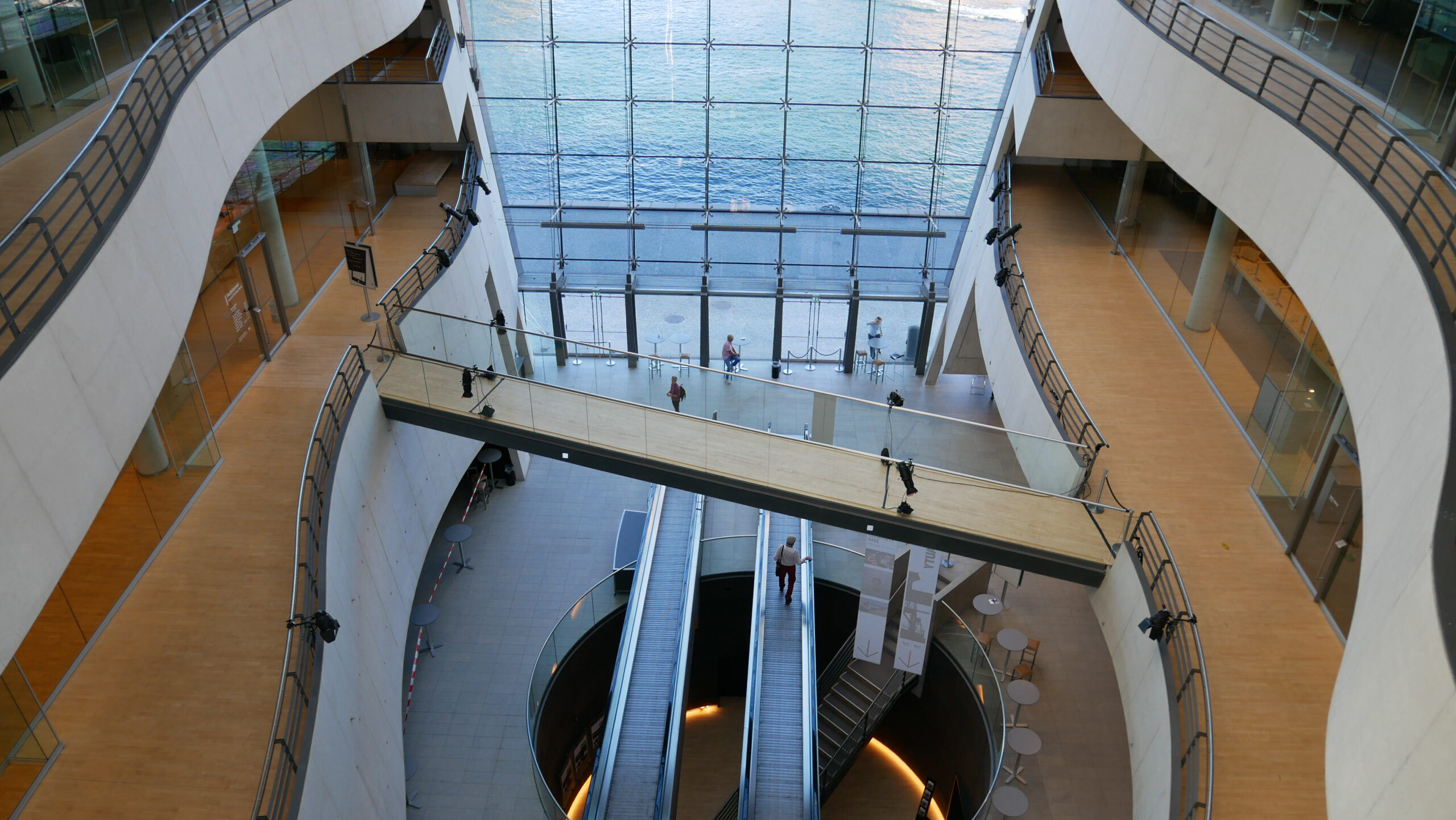

This is part of our special feature, Thinking Eurasia Now.
In this section of Campus, EuropeNow features a selection of scholarly articles and books on topics pertinent to the teaching of Europe or teaching in Europe that were published within the last 5 years. This dynamic bibliography, with monthly installments, seeks to highlight both research and critical analyses of debates taking place in higher education in and about Europe.
1. Invisibilizing Eurasia: How North–South Dichotomization Marginalizes Post-Soviet Scholars in International Research Collaborations
By Aliya Kuzhabekova
In the Journal of Studies in International Education
Abstract: Despite the growing complexity and multidimensionality of the system of international research collaborations, the colonial discourse casting the collaborative relationships in terms of polarized North–South antitheses persists and continues to exert influence on the nature of power distribution in the relationships, as well as on the conceptualization of some players in the relationship as superior donors, whereas others as inferior recipients. In this article, I demonstrate how dichotomic representation of the geopolitical entities involved in international research collaboration fails to acknowledge the existence and marginalizes a large and extremely talented academic community of Eurasian scholars, which has the potential to enrich and transform the global knowledge system if it becomes more actively and authoritatively involved in the international system of ideas exchange and knowledge generation. I argue that this invisibilization of post-Soviet research community is part of the logic of postcolonial governmentality, which creates the demand and draws the post-Soviet world into international trade in knowledge-related expert services, whereby profits and benefits from the trade are reaped by the countries, which self-categorize as the North, while undermining the potential of the former Soviet scholarly community to contribute to global knowledge production on equal terms.
2. The Formation of the Eurasian Research-and-Education Ecosystem and the Internationalization of Educational Platforms: The Case of Russia and China
By Nina Pesterva, Sun Yuhua, Mariya Belyakova, and Feng Jgin
In the European Journal of Contemporary Education
Abstract: The object of this study is to assess the potential for the development of the Russian market for educational services as a component part of the present-day process of internationalization of science and higher education in the countries of Eurasia, above all China and Russia. The paper describes Russia’s and China’s unique unifying and coordinating role in the development of a common educational space, which must result in the creation of a Eurasian research-and-education ecosystem. The authors conducted an analysis of the current structure of the ecosystem. The authors conducted an analysis of the current structure of the education ecosystem. The authors conducted an analysis of the currents structure of the sector of joint Russian-Chinese education institutions. The paper describes the current state of affairs regarding, and prospects for, the development of the government’s digitalization program that is based on the concept of Digital 4.0, a paradigm that is increasingly becoming a natural environment for society to function and develop in. The authors explore some of the key trends and risks inherent in the development of the global market for educational platforms. The paper provides a rationale for the need to create a joint Russian-Chinese educational platform — one can hardly overestimate its role in the implementation of the Belt and Road Initiative transnational project. The study employed a set of traditional methods of research, including classification, comparative analysis, summarization, juxtaposition, and forecasting. In addition, it incorporates a sociological survey of students at Russia’s leading universities. The authors made use of data from the Ministries of Education of China and Russia and various open-access statistics websites, as well as data from a sociological study of their own. The authors’ assessments of the current potential of and trends exhibited by the Russian market for online education, as well as the fact that Russian students are interested in and prepared for active participation in online projects, helped put together a set of recommendations for boosting the competitiveness and efficiency of the Russian market for educational services and those for developing an international educational platform as part of the Eurasian educational ecosystem.
3. Constructing a Eurasian Higher Education Region: “Points of Correspondence” Between Russia’s Eurasian Economic Union and China’s Belt and Road Initiative in Central Asia
By Natalia Leskina and Emma Sabzalieva
In Eurasian Geography and Economics
Abstract: The Russian-led Eurasian Economic Union (EAEU) and China’s Belt and Road Initiative (BRI) intersect and overlap in Central Asia at the heart of Eurasia. Whereas the literature has commonly focused on the economic aspects of these major regional policy initiatives, efforts to create a common Eurasian higher education space through these regionalisms have barely been studied. In response, this paper compares the development of Russian and Chinese led visions for Eurasian higher education regionalism in Central Asia and the extent to which these constructions overlap. The paper also sheds lights on the perspectives of Central Asian states by investigating how these countries are approaching these efforts to construct a Eurasian higher education region. The conceptual framework brings together higher education regionalism with overlapping regionalism and takes a policy-oriented methodological approach. The paper introduces the new term of “points of correspondence” based on language used in both Russian and Chinese policy discourse to explain how constructions of a Eurasian higher education region can overlap without duplicating or flowing into each other. “Points of correspondence” emphasizes neither competition nor collaboration but rather the ongoing pursuit to find ideas and policy tools that best fit one another.
4. The Politics of Exporting Higher Education: Russian University Branch Campuses in the “Near Abroad”
By Maia Chankseliani
In Post-Soviet Affairs
Abstract: This exploratory study represents the first attempt at examining the politics of exporting Russian higher education to the former Soviet countries. The existing numeric and narrative evidence on Russian universities’ international branch campuses (IBCs) was gathered and systematically organized in a new dataset. The study finds that the majority of IBCs operating in former Soviet countries are branches of Russian universities. While the effectiveness of these IBCs is difficult to demonstrate, the study suggests that the Russian Federation uses IBCs as a tool to retain and strengthen its political power and influence in the region. This is done through a nuanced exploration of the niche of Russian IBCs within the differentiated higher educational landscape and through the analysis of the Russian state’s political rationale for establishing and supporting Russian IBCs. The study proposes to interpret the politics of exporting Russian higher education using the frameworks of neo-imperialism and internationalization.
5. Rural Disadvantage in the Context of Centralised University Admissions: A Multiple Case Study of Georgia and Kazakhstan
By Maia Chankseliani, Sophia Gorgodze, Simon Janashia, and Kairat Kurakbayev
In Compare: A Journal of Comparative and International Education
Abstract: The extraordinary expansion of higher education has not been accompanied by more equitable access to universities for various disadvantaged groups. Rural youth is at the heart of this study that draws on secondary data and literature to examine rural-urban disparities in higher education access in two high-participation systems in the Caucasus and Central Asia. This multiple case study uses a historical-comparative lens to offer a synthesis of the evidence on the subnational and cross-national differences in the three domains of higher education access – academic preparedness, HE aspirations, and HEI/programme choice-making – to point to the existence of prominent rural-urban disparities in Georgia and Kazakhstan. The study contributes to an improved understanding of the structural-territorial foundations of inequalities in higher education access and charts future directions for policy. The framework used in this study can be applied to examining disparities in access to higher education in other national contexts.
Image Shutterstock | Copenhagen, Denmark; An interior of the Royal Library and the university library of the University of Copenhagen
Published on September 12, 2023.




